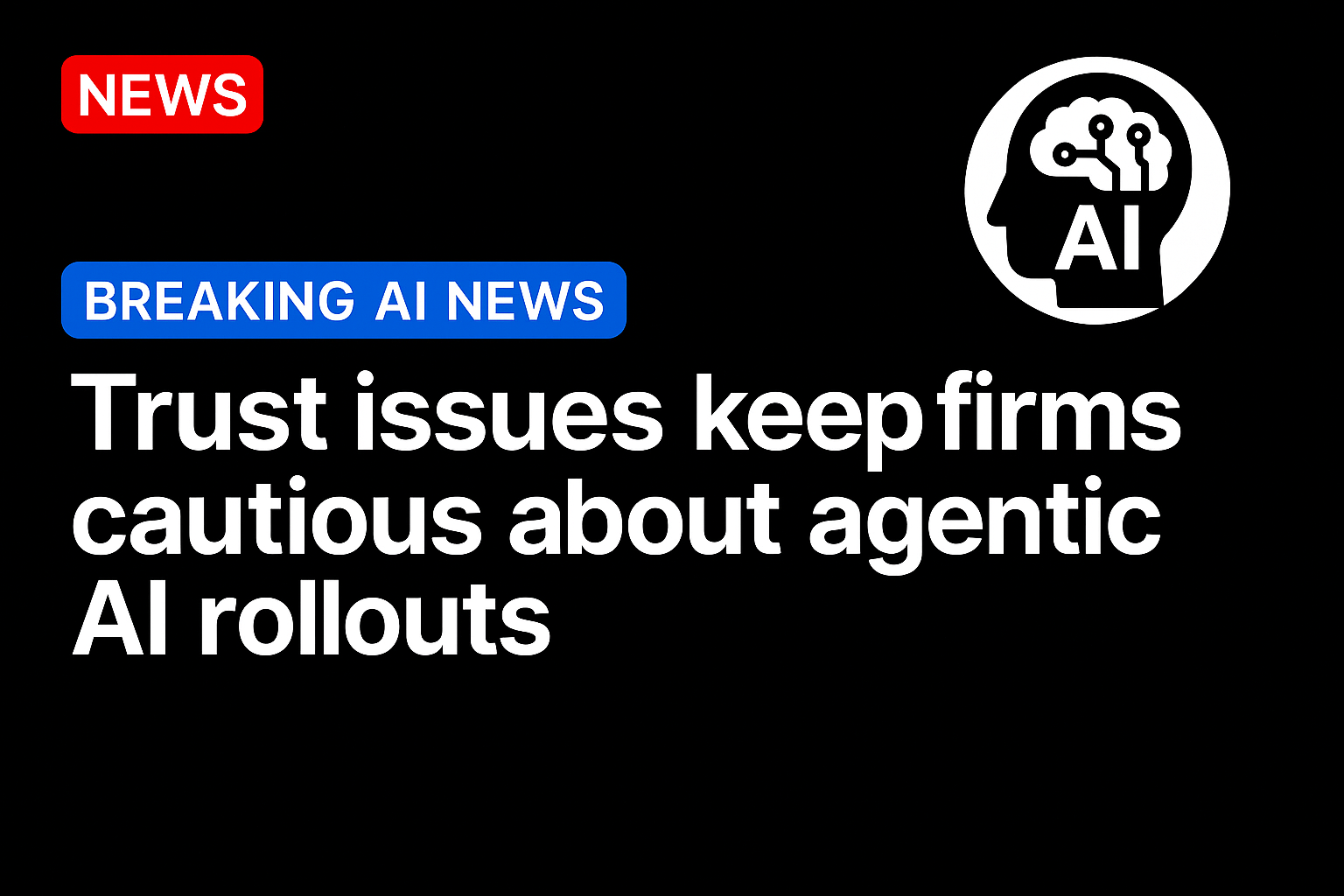For today’s firms and their labor force, the future of work is being spelled out in two words: artificial intelligence (AI). But the vision of AI that firms are keen on embracing is not just as a tool, but as a colleague, a software system capable of thinking, doing, and even acting on its own.
That, after all, is the promise of agentic AI: systems that can not only generate content or parse data, but go beyond passive tasks to autonomously make decisions, initiate workflows, and even interact with other software to complete tasks end to end. It’s AI not just with brains, but with agency.
These systems are being tested across industries such as customer service, software development, finance, logistics and healthcare. Think: booking meetings, launching marketing campaigns, processing invoices, or managing entire workflows autonomously.
But while some corporate leaders may hold lofty views for autonomous AI, the latest PYMNTS Intelligence in the June 2025 CAIO Report, “AI at the Crossroads: Agentic Ambitions Meet Operational Realities,” reveals, there is a trust gap among executives when it comes to agentic AI that hints at deep concerns about accountability and compliance.
However, full-scale enterprise adoption remains limited. Despite growing capabilities, agentic AI is being deployed in experimental or limited pilot settings, with the majority of systems operating under human supervision.
Trust Gap
But why are mid-market companies hesitating to unleash the full power of autonomous AI? The answer is both strategic and psychological. While the technological potential is enormous, the readiness of systems (and humans) is far less clear.
For AI to take action autonomously, executives must trust not just the output, but the entire decision-making process behind it. That trust is hard to earn — and easy to lose.
The PYMNTS Intelligence report data found that 80% of high-automation enterprises cite data security and privacy as their top concern with agentic AI.
Agentic AI platforms typically require access to a wide range of internal systems and data repositories to operate effectively. This raises risks related to unauthorized access, unintentional data exposure, and noncompliance with privacy regulations such as the General Data Protection Regulation (GDPR) in the European Union or the California Consumer Privacy Act (CCPA) in the U.S.
Other concerns were integration issues (62%) and the accuracy of AI-generated outputs (57%).
These figures reflect a general trend: agentic AI is being treated as a high-potential, high-risk technology that has yet to meet the compliance, reliability and trust thresholds required for enterprise-scale deployment.
Read the report: AI at the Crossroads: Agentic Ambitions Meet Operational Realities
Unlike traditional automation tools, agentic systems may involve dynamic decision-making across multiple systems, requiring permissions and credentials that can span departments or functions. Misconfigurations, insufficient access controls, or opaque decision paths can elevate the likelihood of a data breach or policy violation.
Many implementations are restricted to sandbox environments or read-only modes, preventing the AI from executing critical actions without human intervention.
Additionally, agentic systems frequently involve goal-directed behavior — such as booking meetings, managing tickets, or escalating issues — that requires not only linguistic fluency, but also context retention, task memory and policy adherence. Testing and validating these capabilities in production environments has proven complex, and organizations have expressed reluctance to approve unsupervised execution without further assurance of reliability.
The combination of integration friction and limited predictability has led many companies to limit agentic AI systems to internal pilots or assistive roles, where outputs are reviewed and approved by human operators before action is taken.
Across sectors, agentic AI is being adopted in phased or modular deployments, usually in configurations that include: human-in-the-loop systems, where AI agents perform tasks or suggest actions, but humans retain final decision authority; task-specific agents, where AI tools are limited to defined domains such as scheduling, content summarization, or customer service triage; sandbox testing, where systems are deployed in isolated environments for performance evaluation, without access to live systems or sensitive data; and proof-of-concept pilots, or short-term experiments used to evaluate ROI, reliability and integration complexity.
Source: https://www.pymnts.com/





